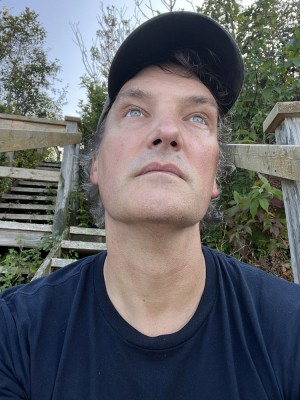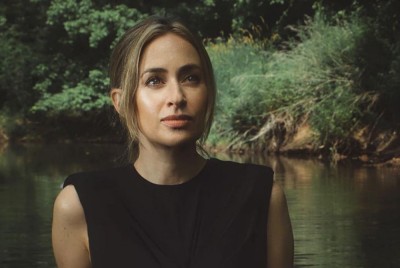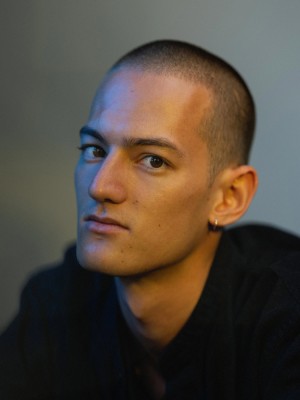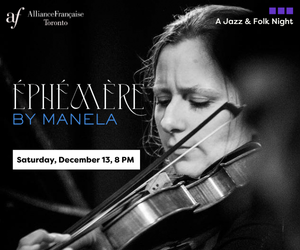 As the concert season shifts toward winter, Toronto’s new music scene is gathering momentum with a rich constellation of performances from four of the city’s core presenters. Among the many offerings, one work stands out for the way it merges spiritual form with ecological urgency: Mass for the Endangered by composer Sarah Kirkland Snider. The piece will be performed on November 22 in a Soundstreams concert that also features works by Andrew Balfour, R. Murray Schafer, Olivier Messiaen, Arvo Pärt, and Chris Hutchings. I recently spoke with Snider by phone about the piece and her current projects.
As the concert season shifts toward winter, Toronto’s new music scene is gathering momentum with a rich constellation of performances from four of the city’s core presenters. Among the many offerings, one work stands out for the way it merges spiritual form with ecological urgency: Mass for the Endangered by composer Sarah Kirkland Snider. The piece will be performed on November 22 in a Soundstreams concert that also features works by Andrew Balfour, R. Murray Schafer, Olivier Messiaen, Arvo Pärt, and Chris Hutchings. I recently spoke with Snider by phone about the piece and her current projects.
Mass for the Endangered began when Snider was invited by Trinity Church Wall Street in lower Manhattan to contribute a new work to their Mass commissioning series. The church asked five composers to reinterpret the Mass in any way they wished, with just one requirement: use the traditional Latin for two movements, the Gloria and the Sanctus Benedictus.
“They said we could write on any topic or use any other texts,” Snider recalls. “So I turned to my longtime collaborator, writer Nathaniel Bellows, and asked him what he wanted to write about. I believe a writer does their best work when they’re deeply engaged with the subject matter. He immediately said, ‘the environment and endangered species.’ That’s exactly what I’d hoped for.”
Snider and Bellows were determined to preserve the meaning behind the traditional Latin text, using it as a point of creative departure. “Take the Gloria,” she says. “Traditionally, it celebrates the glory of Jesus and God. As I worked with the Latin, I thought of endangered species: the red fox, the panda, the Bengal tiger. When the text repeats, ‘You alone are the Holy One, You alone are the Lord,’ I imagined the singularity and preciousness of each life form. That became the jumping-off point.”
The result was Mass for the Endangered, a contemporary choral work that reimagines the structure of the Mass as a prayer to the natural world rather than to a deity. “We wanted this Mass to be a plea for mercy and intervention, not to Jesus or God, but to Mother Nature,” she explained.
Wonderful overwhelm: For Snider, nature is more than a subject. It’s a spiritual foundation. “Nature and music are my two sources of divinity,” she says. “I’m not a traditionally religious person, but I find the sense of divinity when I’m in nature.” She is a passionate environmentalist, and her deep connection to the natural world made the Mass commission feel like an ideal match. “I got to bring my two notions of divinity, music and nature, and shape them into something that felt like my form of theology.”
Snider’s relationship to the voice also runs deep. “Growing up, I did a ton of choral singing,” she remembers. “Those are some of my favourite memories. I spent summers at the American Boychoir School’s co-ed program, singing under amazing conductors from around the world.” She describes the sense of “wonderful overwhelm” she felt as a young singer: the sound, the togetherness, the magic of voices blending. “Even though I didn’t have a traditional religious upbringing, most of the music we sang, whether it was sacred or secular, always felt sacred to me. It felt larger than life and magical.” Writing Mass for the Endangered became a wonderful way to return to that feeling.
Her compositional process for vocal works often begins with text. “I think about the emotions it stirs, take long walks, and sing ideas into my phone. Working with text gives me the shape of the musical line,” she says. “With instrumental music, it’s more abstract. With text, it’s direct. It’s about capturing a precise emotion.”
Hildegard: Snider is currently working on a new orchestral ballet, a collaboration between the New World Symphony and the Miami City Ballet. She is also preparing to launch a new orchestral album, scheduled for release in the coming months. But most of her attention is on the world premiere of her first opera with LA Opera, inspired by the life of Hildegard von Bingen.
“Hildegard’s connection to nature, spirituality, and music has always fascinated me,” she explains. “I first encountered her because, like me, she experienced chronic migraine. I was inspired by how she lived such an expansive, creative life despite those limitations, and as a woman in the Middle Ages, with so little power.”
Snider wrote both the music and the libretto, blending historical research with her own imaginative interpretation. “I wanted to explore how she lived her authentic truth in an oppressive environment,” she says. “Her relationship with Richardis von Stade, another nun, rubbed against religious norms. I was curious about how she navigated that. What she buried, what she revealed, and how that shaped her visions and philosophy.”
She hopes the opera resonates today. “Given the current climate—threats to women’s rights, LGBTQ+ rights, so much cultural repression, her story feels urgent. It’s about finding ways to live one’s truth in the face of power structures that want to silence it.”
Meanwhile, Mass for the Endangered continues to travel widely, resonating with audiences moved by its fusion of ecological urgency and spiritual form. For Snider, the work is like a prayer to the Earth itself, a musical act of devotion and a plea for the world’s fragile beauty to endure.
And while Soundstreams brings Snider’s work to Toronto audiences, other presenters are also offering programs that explore time, memory, and our shared human experience in strikingly different ways.
New Music Concerts: Earlier in the month, on November 9, New Music Concerts invites audiences to step into a world where time itself becomes elastic. Mystery of Clock, co-produced with University of Toronto Faculty of Music, is built around the interplay of violinist Mark Fewer and percussionist Aiyun Huang, who weave music, theatre, and light in a poetic meditation on love, memory, and the elusive nature of shared time. Structured as a series of evocative scenes, the work explores how our experience of time shifts—how rhythms fall in and out of sync, how intimacy stretches or contracts a moment, how memory lingers long after it’s gone. The evening features mostly contemporary works, with one by J.S. Bach, bringing past and present into resonant dialogue.
Arraymusic: On November 22, Arraymusic makes a welcome return to a more active concert presence with Future, Past, They Disappear, a program curated by composer Bruce A. Russell. The title, borrowed from the Earth, Wind & Fire song That’s the Way of the World, gestures toward the way music can suspend us in time, holding the past and present in the same breath. The concert brings together works by Hannah Ishizaki, Angélica Negrón, Rebecca Bruton, and the late Ann Southam, inviting listeners to linger in that delicate space where memory, presence, and sound converge.
Arraymusic returns on December 18 with Playscape Emporium, a program that pushes the boundaries of theatrical chamber music. The evening opens with Frederic Rzewski’s Fall of the Empire, performed by Duo Cichorium, who weave in costuming, props, and lighting to heighten its satirical edge. A premiere by Domenic Clarke follows, combining viola, percussion, and electronics in an intimate reflection on life and death. The concert closes with Raymond Luedeke’s Garbage Delight, performed by the Toronto Saxophone Quintet and Trevor Flemings, offering a humorous and whimsical finish.
Esprit Orchestra: Esprit Orchestra launches the second iteration of its four-concert Edge of Your Seat International Festival on November 30,with a concert titled Tour de Force. It includes a new commissioned work by Chris Goddard, titled a brace, a round, a bracing sound celebrating the ensemble’s fearless spirit, alongside the sweeping overture to The Tempest by Thomas Adès. Gabriella Smith’s Tumblebird Contrails epitomizes her response to the climate crisis as “an opportunity to take action” – evoking the ecstatic flight of ravens over sea and sand, while Anna Thorvaldsdottir’s ax (constellation from METAXIS) contrasts swirling sonic intensity with moments of stillness. Two works by Ben Nobuto bookend the festival: a reprise of the trickster meditation Serenity 2.0 in this opening concert, and his playful, large-scale Hallelujah Sim scored for 72 voices, orchestra and electronics, the title work in Edge of Your Seat’s April 23 final concert.
Continuum Contemporary Music: Moving into December, Continuum Contemporary Music brings together an expanded ensemble for an evening on December 6, curated by artistic producer and violinist Roan Ma, joined by guest artist Stef Van Vynckt. At the heart of the program is Marcos Balter’s Violin Concerto, a work that explores fluid interplay between soloist and ensemble. A new piece by Jessica Ackerley for violin and harp, inspired by the connections and complexities of friendship, adds a fresh Canadian voice. The concert also includes works by Anna Höstman, Toshio Hosokawa, and Haotian Yu — a program that promises a subtle balance of lyricism, ritual, and sonic exploration.
Taken together, these four concerts mark a fitting beginning to the 2025–26 season, pointing toward a year alive with new sounds and expansive listening, a season that looks forward and invites us along.
Wendalyn Bartley is a Toronto-based composer and electro-vocal sound artist. sounddreaming@gmail.com







